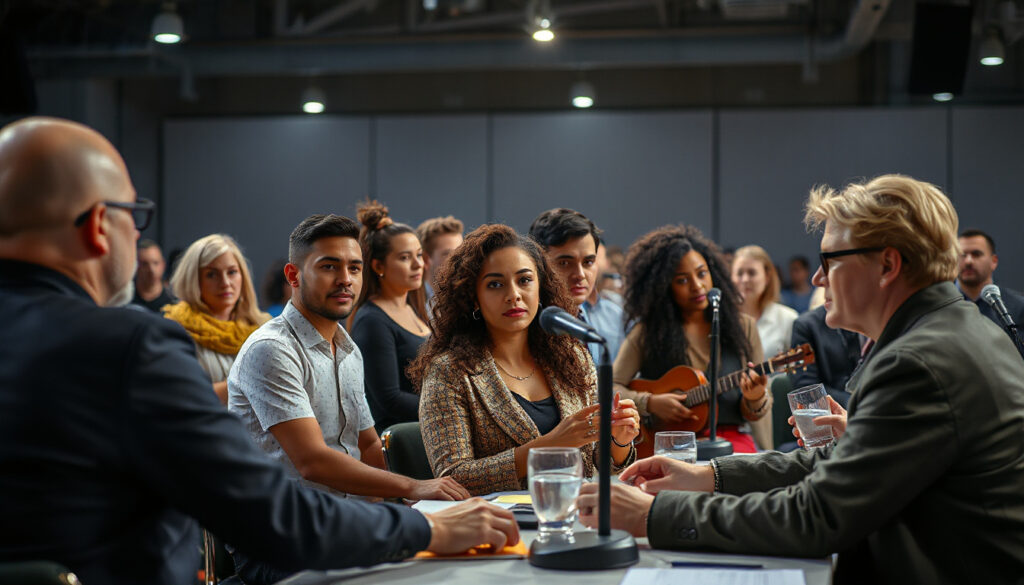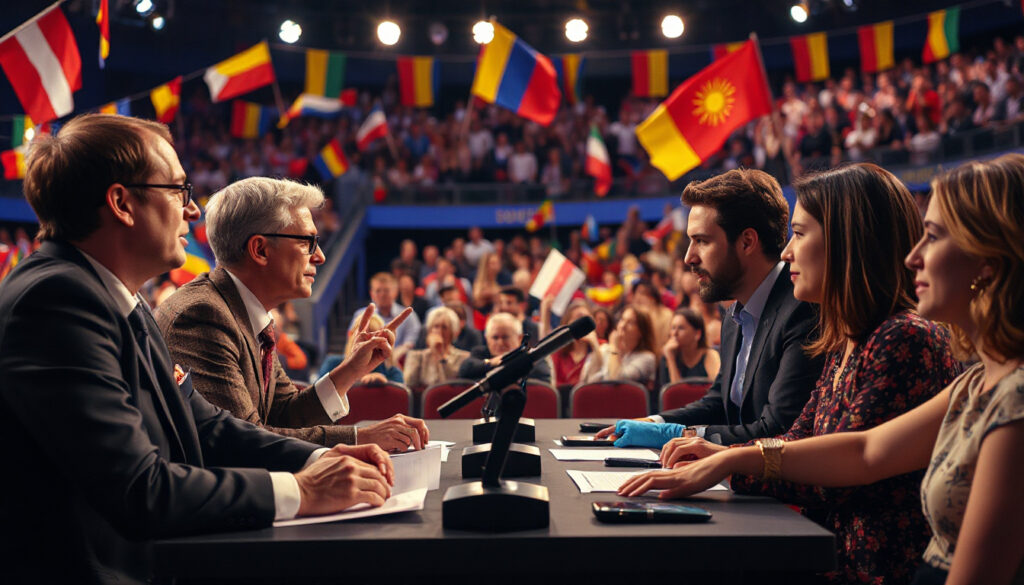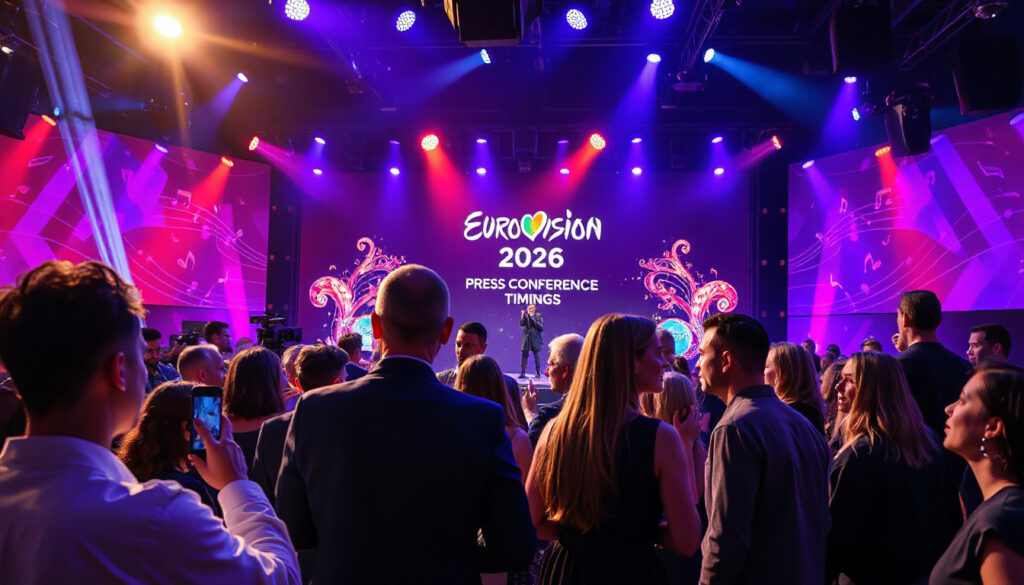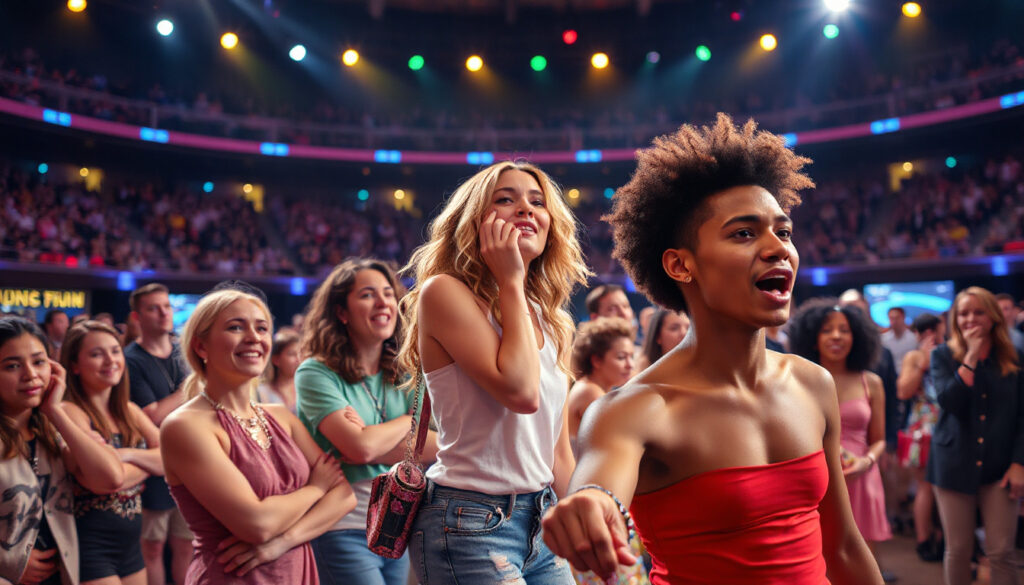Eurovision fans know that the magic starts well before the night in Vienna. The live scores draw millions. The path to the stage has many links that work close together. This guide breaks down the steps—from national choices to broadcaster decisions—so artists and fans can see how the process works.

What Does It Take to Become a Eurovision 2026 Artist?
Every artist must first earn a spot as their country’s chosen representative. Each country uses its own way to pick an act. The common rule stays: all broadcasters must belong to the European Broadcasting Union (EBU) and follow its participation rules.
National Broadcasters and Their Role
Each country uses a public broadcaster to decide on the act and song for Eurovision. For example, the United Kingdom uses the BBC, Sweden uses SVT, and Austria, the host for 2026, uses ORF.
- Freedom in the Choice: The EBU leaves the way artists and songs are picked to each broadcaster. They plan their own process and must explain their choice clearly.
- Two Main Types of Selections:
- National Finals: These are live, televised shows with several artists and songs. They run over weeks with rounds of cuts, like Sweden’s Melodifestivalen, which got almost 3,900 song entries in 2026.
- Internal Selections: Some broadcasters, like Česká televize in the Czech Republic, choose their artists and songs in closed sessions without public votes.
How Do Artists Submit Entries?
For those who wish to join, the starting point is to send a song to the national broadcaster. Each country gives its own deadline, usually from September to December. Here is what you need to know:
- Song Submission Windows: Broadcasters share the rules, who can enter, and when. Some let local songwriters join, while others only accept entries from nationals.
- Open Calls vs. Invites: Some broadcasters hold contests where anyone can join while others pick songwriters and artists before the public sees the list.
- Selection Committees: In many countries, a committee goes through the entries and makes a shortlist. Often, both jury scores and public votes shape the final choice.
Example: In Austria, a national final named Vienna Calling – Who will sing for Austria? is set for 20 February 2026. This show marks a return to a live selection process after ten years.
What Happens in National Finals?
National finals show a range of entries. Here, experts, the public, or both, judge who goes to Eurovision.
- Formats in Use:
- Several countries run multi-week shows with many rounds (like Sweden).
- Others hold one-night events with a final round (like Luxembourg’s Song Contest).
- Voting Steps: Many shows mix jury scores with public votes. This way, professional views and fans’ choices work side by side.
- Eurovision Themes: These shows often nod to Eurovision’s past. They may display past songs or have special acts that honor the contest’s history.
Popular National Finals in 2026:
- Melodifestivalen (Sweden)
- Supernova (Latvia)
- Melodi Grand Prix (Denmark)
- Eesti Laul (Estonia)
- Benidorm Fest (Spain)
- Festival di Sanremo (Italy)
- UMK (Finland)
Each event shows a mix of musical styles—from metal in Iceland to folk in Croatia—so there is something for every fan of music.
Internal Selections: A Closer Look
Some broadcasters choose their act without a public show. They use behind-the-scenes methods for reasons such as budget or artistic control.
- Internal Selection in Practice: The Czech Republic uses internal panels to choose their act.
- Paired Selections: In some cases, a broadcaster picks a song and an artist together.
- Benefits: This system lets more unique or experimental acts get a chance on the Eurovision stage.
Important Timelines and Deadlines for Eurovision 2026 Artist Selection
It is key for artists, songwriters, and fans to know the main dates:
- Broadcaster Registration: Broadcasters confirm their entry usually by mid-September in the previous year.
- Song Submission Deadlines: These fall between September and December 2025.
- National Final Seasons: Many countries hold their national shows between January and March 2026.
- Final Song Choice: Some selections happen as late as early March.
- Eurovision Dates: Semi-finals are on 12 and 14 May 2026; the final happens on 16 May at Wiener Stadthalle in Vienna.
Why Does This Process Matter for Artists and Fans?
This pathway shows the strong links in the race to Eurovision. For artists, knowing when to send your song and how each step works helps you shine. For fans, national finals provide a way to spot new talent and enjoy Europe’s diverse sounds even before the big night.
Key Takeaways for Aspiring Eurovision Artists
- Check your national broadcaster’s website for entry rules and dates.
- Start on your song soon to meet the deadlines.
- Choose between a public final or an internal route, based on your country’s method.
- Join fan communities to keep up and get useful feedback.
- Get ready for live shows if you make it to the national final, as plans can vary.
Moving Forward: Get Ready for the Eurovision 2026 Artist Race
Eurovision 2026 brings not just a live show in Vienna but a journey of talent discovery. Artists and fans alike have many paths to follow in the selection process that builds a strong link to the main event.
If you aim to submit your own song or simply follow the race, check your national broadcaster’s news and tune in to the upcoming national finals. The route to Eurovision starts long before the lights shine at Wiener Stadthalle.
Next Steps
- Visit your national broadcaster’s website to review entry rules.
- Follow updates on Eurovision fan pages and social media.
- Work on your performance and network with songwriters for a strong entry.
- Watch for national final shows between February and March 2026, the important lead-up to Eurovision.
Enjoy the journey to Eurovision 2026—it is as exciting as the contest itself!







